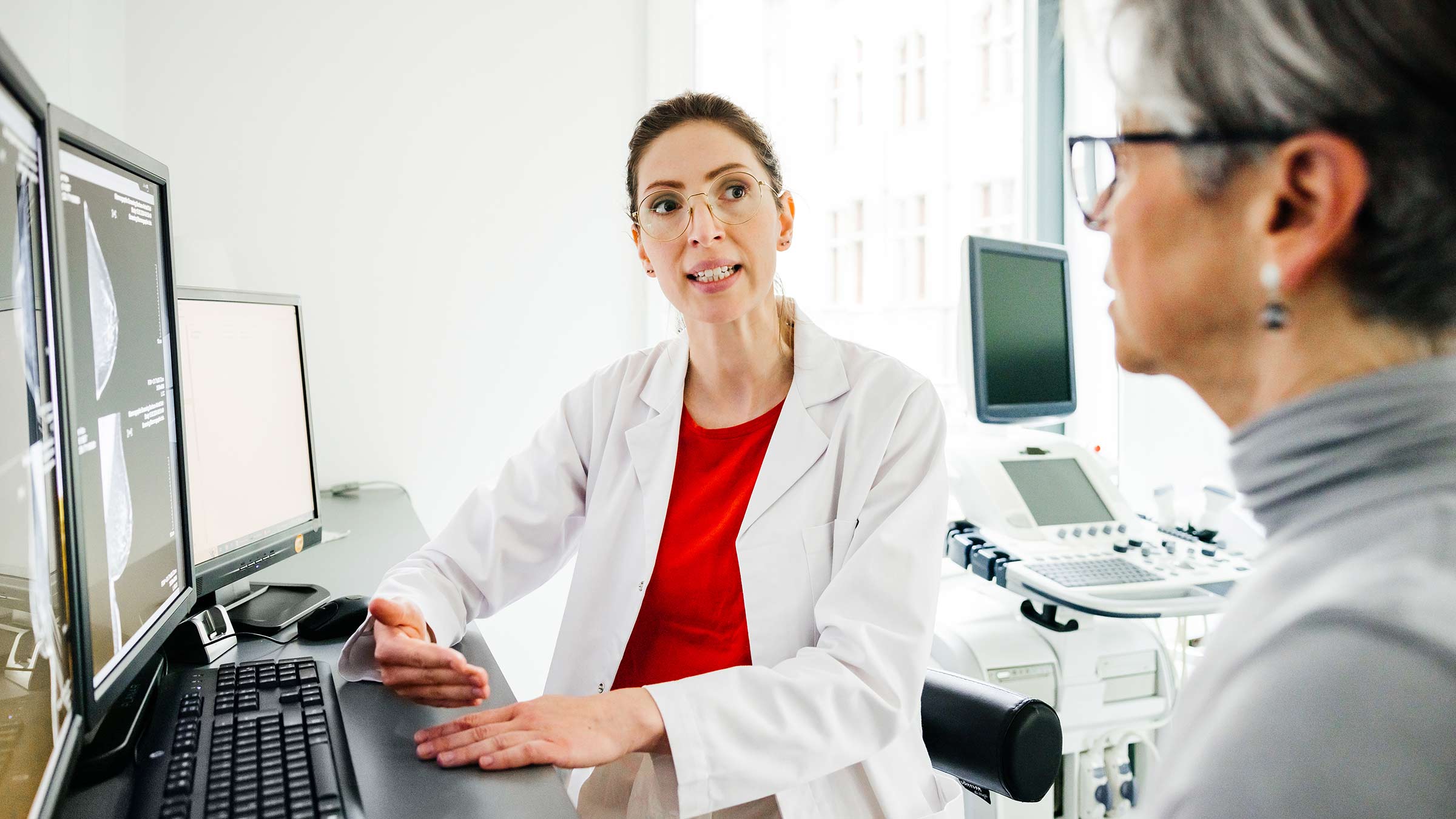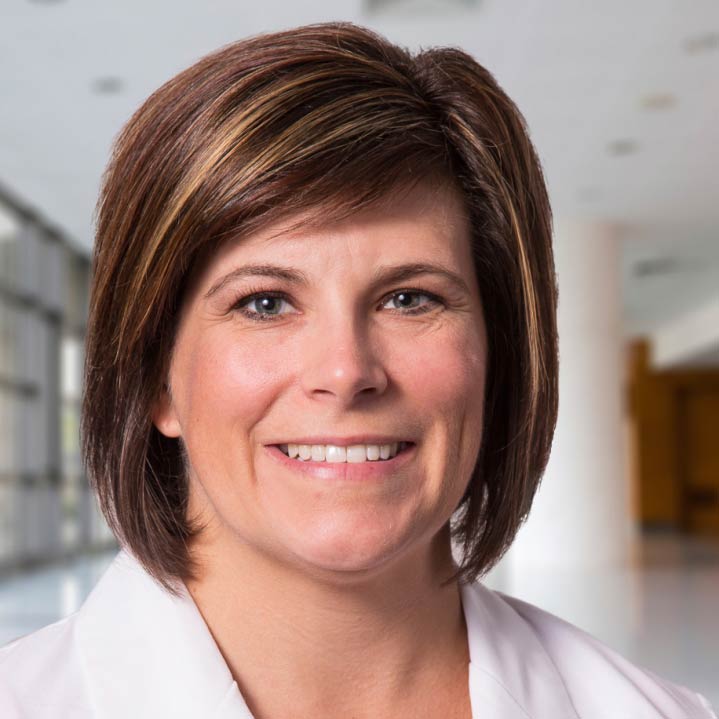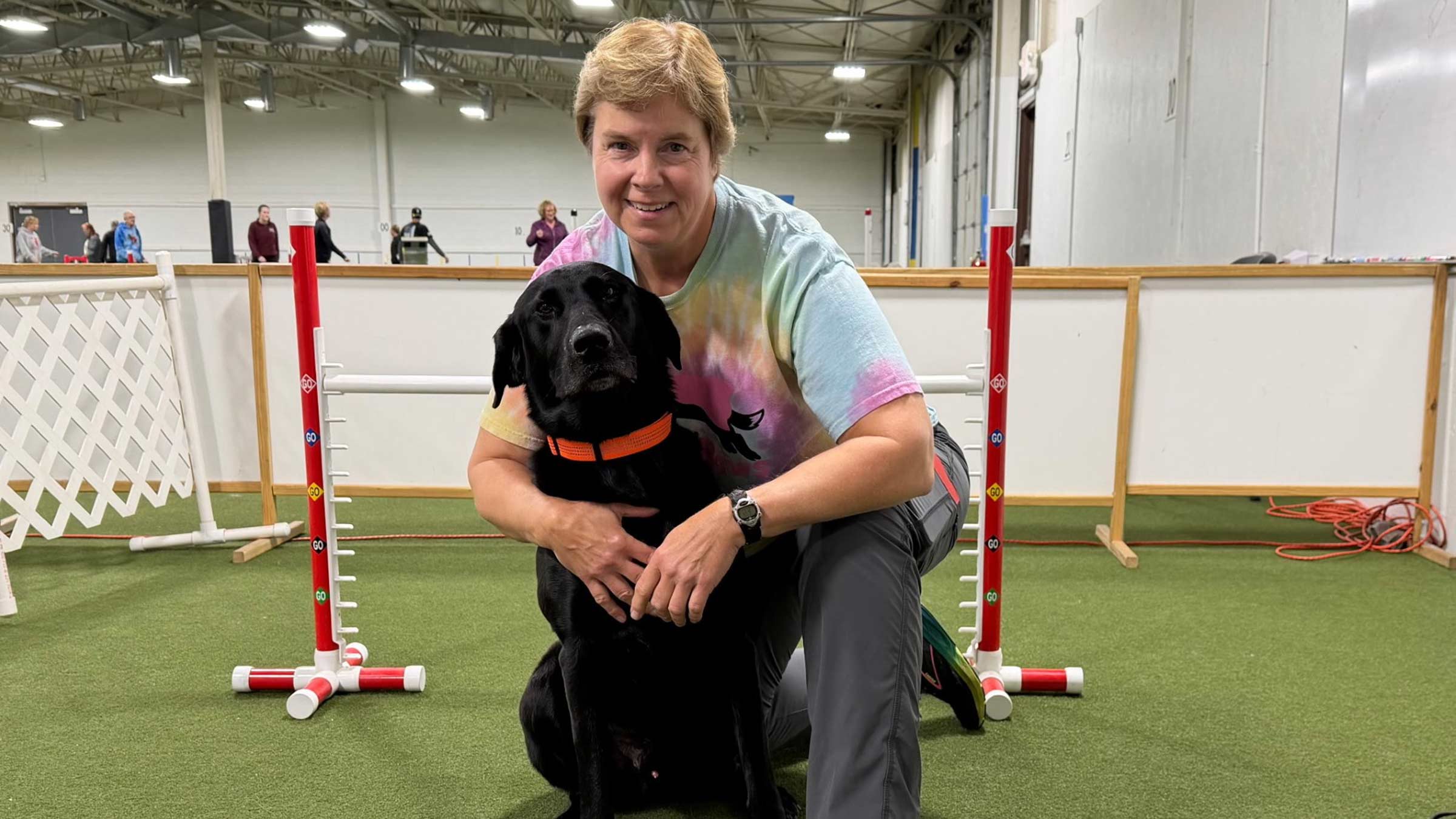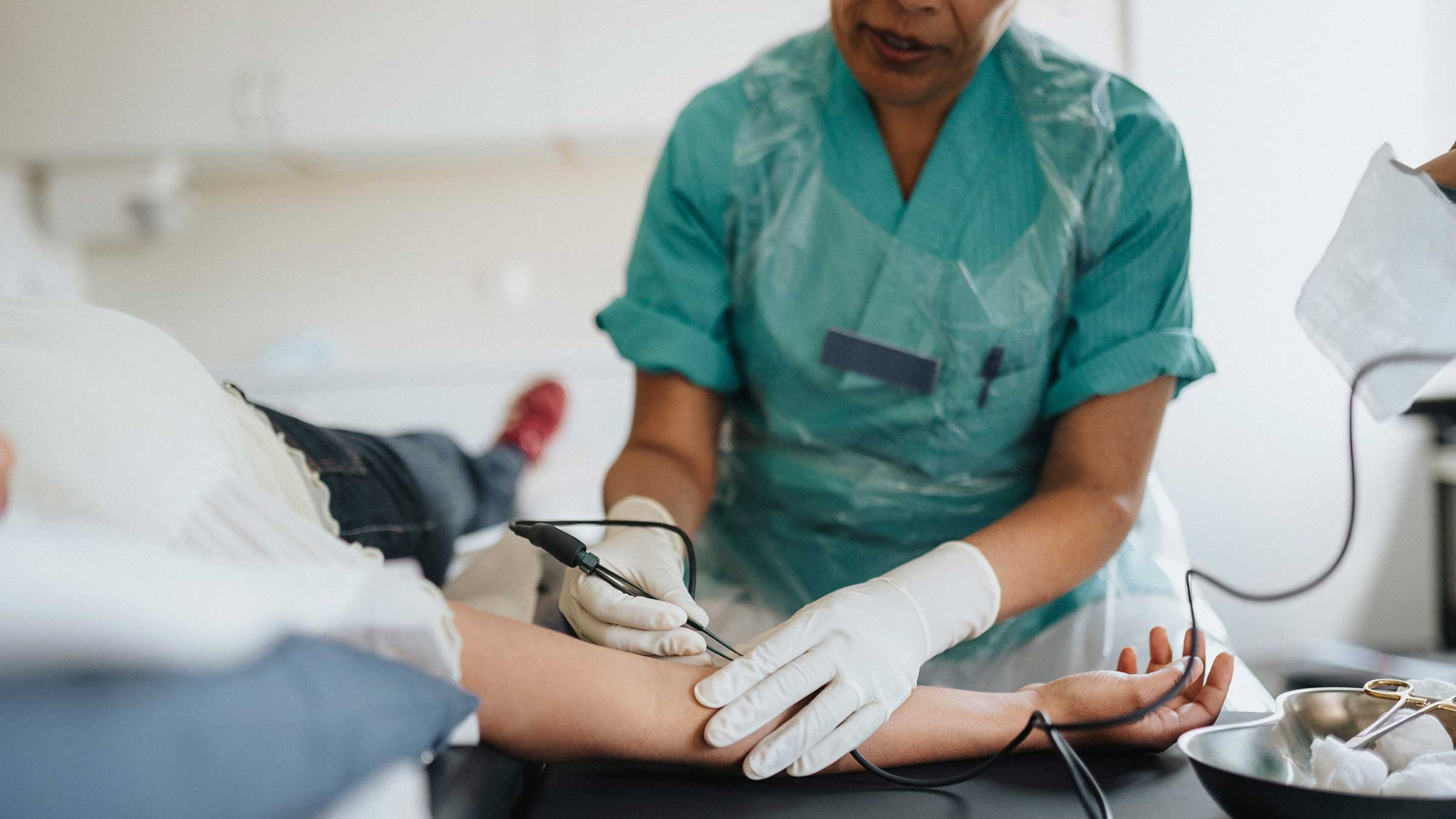How 3D mammography and other new technologies detect breast cancer more quickly and accurately
Advances in mammography allow breast radiologists to find more cancers at a much earlier stage.
Ready for your mammogram appointment? Whether you’re getting a mammogram for the first time or are already familiar with the yearly screening, advances in mammography have made it possible for breast cancer to be detected earlier than ever before.
According to the American Cancer Society, when breast cancer is caught in its earliest stages, the five-year survival rate is as high as 99%.
That’s why getting a yearly mammogram is so important for all women. It’s important to know your family history and risk factors for breast cancer and discuss these with your primary care provider or see one of our high-risk providers at Ohio State’s Stefanie Spielman Comprehensive Breast Center to learn if you are at higher risk for breast cancer, and develop a personalized plan for your breast health needs.
Here are answers to questions about what is new in mammography and the expertise you can expect to find at The Ohio State University Comprehensive Cancer Center and Arthur G. James Cancer Hospital and Richard J. Solove Research Institute (OSUCCC – James).
What should I expect at my first mammogram?
We ask that the last time you take a shower before your appointment, skip using your usual deodorants, lotions or powders. Why? These substances can show up on your mammogram and appear as suspicious findings that can result in the need to call you back for additional imaging.
Once you arrive at your appointment and complete patient registration, you will be called back for your mammogram. You will be asked to disrobe from the waist up, and you’ll be given a robe to put on for your exam. Before your mammogram takes place, the mammogram technologist will ask some questions regarding your breast health and medical and family history and briefly explain the imaging exam. They will then position you in the mammogram machine to get the best images possible of your breasts.
When ready, your breast will be pressed between two plates to flatten the tissue while an X-ray is taken. When each picture is taken, the technologist will ask you to hold your breath for a few seconds. Images of your breast will display on a computer screen and the technologist will check the images to ensure the quality is optimal and if any additional images are needed for the radiologist to be able to interpret your imaging. The imaging will then be sent to one of our expert breast radiologists for interpretation and a report will be finalized and available in your MyChart along with a letter sent to your address on file. If anything suspicious is identified on your mammogram, one of our breast imaging staff will call you to assist you in scheduling follow-up diagnostic imaging to further evaluate the suspicious finding(s). When finished, the technologist will discuss next steps with you.
Is a mammogram painful?
A mammogram isn’t painful, but for some women it can be uncomfortable. If you have breast tenderness or pain around or during your menstrual cycle, it’s best to avoid scheduling your mammogram around this time.
If you are having any breast pain on the day of your exam, you should discuss this with your technologist as she is positioning you in the mammogram machine. We want to make sure we get good images of your breasts, but you should never be in pain. Most people can tolerate the discomfort, which only lasts a few seconds.
If you do feel pain during your mammogram, tell your technologist right away so they can adjust your position to find a position that you are able to tolerate for the exam.
What advanced imaging technologies are used to diagnose breast cancer?
The newest technology for screening mammograms is 3D tomosynthesis, also known as breast tomosynthesis. This technology takes multiple pictures of your breast using low dose X-rays. 3D images have better resolution and specificity that allow us to find more cancers at a much smaller and earlier stage.
3D tomosynthesis is the standard at all of our clinics and allows our expert trained breast radiologists to detect cancer earlier and more accurately. With 3D imaging, the need to call back individuals for additional diagnostic imaging has greatly decreased compared to the previous 2D imaging.
Additional screening technologies are magnetic resonance imaging (MRI) and automated whole breast ultrasound (ABUS). These may be used to complement your mammogram if you have dense breast tissue or an elevated risk of breast cancer. You should discuss any potential risk factors with your primary care provider to help determine if you require additional screening for your breast health.
How does AI in breast imaging improve detection?
Artificial intelligence (AI) is a powerful tool that helps doctors, especially radiologists, in examining breast images. Think of AI as a super-smart assistant that can quickly scan through images and highlight areas that might need a closer look. This helps radiologists work more efficiently and accurately.
However, it’s important to know that AI doesn’t replace the radiologist. Instead, it acts like a second pair of eyes. The AI can point out spots that might be concerning, but it’s the radiologist who makes the final decision. They review the flagged areas and determine if there’s anything to worry about.
What does having dense breasts mean?
Having dense breast tissue is common and normal. In fact, about 50% to 60% of women ages 40 to 44 have dense breasts. Density of your breast tissue is determined from your mammogram appearance — not the feel or weight of your breasts.
There are many factors that contribute to dense breast tissue, including genetics, age, having children, having a low body-mass index and using post-menopausal hormone replacement therapy.
If you have dense breast tissue, it lowers the sensitivity of your mammogram to see masses, because on the images, the dense tissue of your breast is white and so are masses that occur in the breast.
Even though we can’t see masses as easily on mammograms when women have dense breast tissue, there are other findings seen on mammograms that are concerning for breast cancer that aren’t affected by the density of your breast. This is why mammography is still the first and best screening exam.
If you have dense breast tissue, you’ll get a letter in the mail from us with the results of your screening mammogram that will alert you that you have dense breast tissue and will make you aware of additional secondary screening exams that are offered that can help find any masses that might be hidden by your dense tissue. You should discuss your breast density and additional screening options with your primary care provider so that, together, you can create the best personalized plan for you.
Why are some women at greater risk for breast cancer?
There are risk factors for breast cancer that you can and can’t change. Risk factors you can change include obesity, poor diet, lack of exercise, alcohol use and some hormone treatments.
Risk factors you can’t change are age, family history, genetic mutations, dense breast tissue and the age you started to menstruate.
If you have a greater risk for breast cancer, your care team may:
- Advise that you start mammograms 10 years before the age of your family member when she was diagnosed.
- Recommend additional secondary screening imaging with an MRI or ABUS to help screen for cancer.
Does Ohio State have specialized screening tools and treatment available for breast cancer?
The OSUCCC – James is home to a high-risk breast cancer program that can evaluate a woman’s personal lifetime risk for the disease. We also offer genetic counseling.
If you’re concerned that you have an elevated risk of developing breast cancer, we’ll work with you to develop a personalized plan to reduce your risk. This may include closer monitoring with supplemental visits and imaging beyond a yearly mammogram to help catch cancer earlier should you develop it.
At the Stefanie Spielman Comprehensive Breast Center at the OSUCCC – James and our James ambulatory sites throughout central Ohio, our expert radiologists only see patients who have breast cancer, have a concern for breast cancer or are being screened for breast cancer. Our breast center provides a single state-of-the-art facility for almost all breast cancer services including:
- mammograms
- medical oncology clinics
- infusion therapy
- surgery consultations
- radiation therapy

The choice for cancer prevention is clear
Schedule your mammogram with the experts at The James, who understand there is no such thing as a routine mammogram.
Schedule Now








